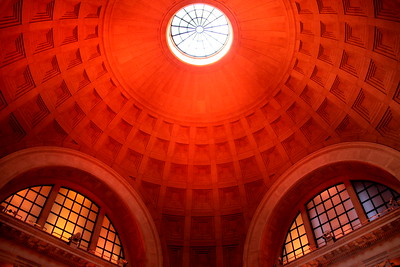Inspiring Youth Climate Action

Clean Air Council and HACE CDC, a community development organization in North Philadelphia, are partnering with the Franklin Institute for the Youth Climate Action Summit and hosting a workshop dedicated to “Inspiring Climate Action” for students in grades 8-12 in the Philadelphia area. Council Advocate Russell Zerbo and Neighborhood Advisory Committee Program Director Stasia Monteiro will be co-facilitating this event on April 13 with the goal of helping students form local campaigns to address the climate crisis in their communities.
The virtual workshop begins with an activity Zerbo and Monteiro used to administer in-person to elementary school students including the William Cramp Elementary School in Philadelphia’s Fairhill neighborhood. Students who are able to do so are asked to run in place for a period of time, and then quickly breathe through a straw to illustrate the impacts of a constricting respiratory system. Students will then be asked to brainstorm negative effects of asthma and other respiratory issues. For example, asthma greatly inhibits one’s ability to sleep and a lack of sleep has an exacerbating effect on asthma.
Lack of sleep creates a negative worsening cycle and makes it even harder for kids to succeed, especially those who face racial and social inequity in their community. In Philadelphia, a black child is more than 4 times as likely to be hospitalized for asthma than a white child. According to the 2020 Health of the City report prepared by the Philadelphia Department of Public Health, for every 10,000 children, 53 Black children suffered an asthma-related hospitalization compared to 13 white children. A child who loses sleep because of asthma is at an extreme disadvantage in the classroom compared to a child who has had a full night sleep. This compounds with other issues at-risk children face.
Presenters will focus on similar issues that cause cascading effects, both positive and negative, starting with the negative and worsening cycle of asthma flare-ups and trouble sleeping. Some pollutants like carbon dioxide or methane trap heat and worsen climate change, while others like ground-level ozone and particulate matter make it difficult to breathe. Ground-level ozone, the main component of smog, is formed when volatile organic compounds (VOCs) and nitrogen oxides, emitted from a variety of pollution sources, react in sunlight. Hotter temperatures from climate change result in increased ground-level ozone levels.
Workshop facilitators will then brainstorm with students to identify existing indoor and outdoor air pollution sources and possible alternatives. The goal of the workshop is for students to break into small groups and sketch-out short “public service announcements” to be shared with their friends on social media. Students will be asked to identify a problem like asthma or climate change, provide scientific and emotional context, and then offer a solution, either at the individual, community, or governmental level.
Air pollution reacting in our atmosphere to make more air pollution is a scary concept for kids and adults alike, but this activity will open up a conversation on ways to ensure future generations are able to enjoy a healthy environment.
Email Russell Zerbo at rzerbo@cleanair.org if you need help forming a local climate change campaign.

